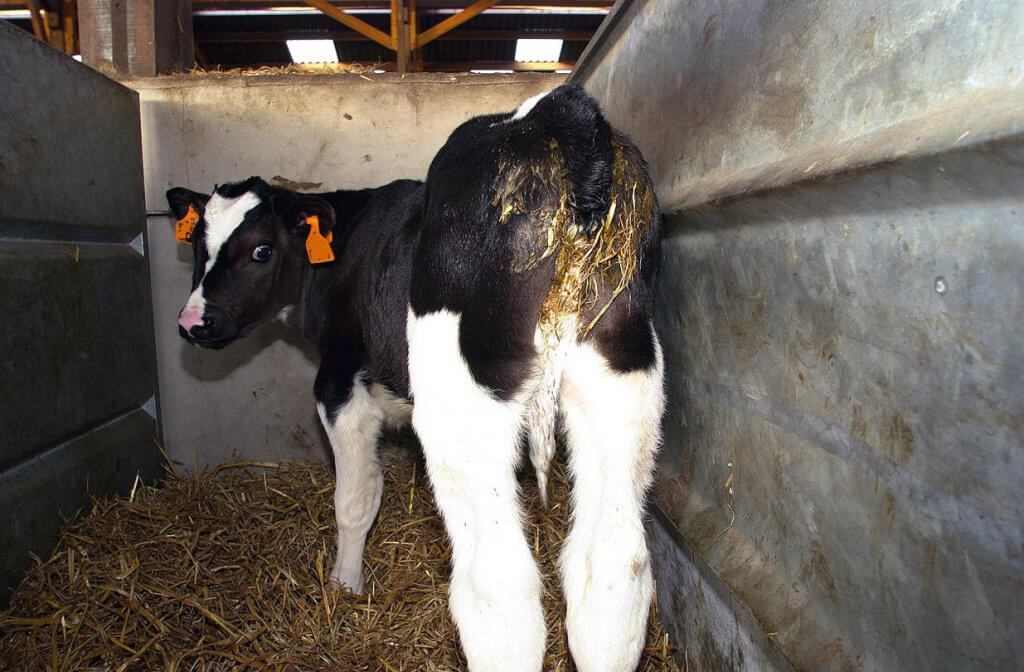Intestinal problems in young calves
In young calves, a disturbed fluid balance at gut level is one of the main health issues. Intestinal problems are often caused by viruses, bacteria or parasites. Examples include E. coli, Rota and Coronavirus, Cryptosporidiosis and Salmonella. Next to these pathogens, nutrition may play a large role in the development of diarrhoea.
Diarrhoea often occurs in young calves. We need to make a distinction here between infectious diarrhoea and nutritional diarrhoea. Figure 1 shows the differences between infectious and nutritional diarrhoea, and how to act in both cases. Around 70 percent of all cases of diarrhoea is related to nutrition and management. To solve the problem, we first need to find out the cause: Was the temperature of the milk replacer too low or too high, what about the quality of the milk replacer, was the water to powder ration correct?

Figure 1: Symptoms and measures in case of nutritional and infectious diarrhoea
Infectious diarrhoea
Infectious diarrhoea is caused by a virus, bacterium or parasite, e.g., E. coli, Rota and Coronavirus, Cryptosporidiosis and Salmonella1. These pathogens attach to the gut wall and excrete substances, like toxins, that disturb the equilibrium between uptake and excretion of liquids and electrolytes. This leads to excessive excretion of water: diarrhoea.
Bacteria
The main bacterium causing disturbances at the gut level in young animals is E. coli, which is especially harmful in the first four days of life. Toxins produced by E. coli damage the gut wall and cause the loss of large amounts of fluids from the intestines. This leads to serious, watery diarrhoea. Calves may die, sometimes even before the diarrhoea is clearly noticeable.
Mycotoxins
Also, toxins produced by moulds (mycotoxins) often cause digestive disorders in calves. Mycotoxins are produced by members of the moulds family (single cell organisms, like yeasts, or multicellular organisms like mushrooms), and are synthetized as defence mechanism. Three important mould species are Penicillium, Aspergillus and Fusarium. Mainly Fusarium mycotoxins (deoxynivalenol, DON) are notorious as causes of diarrhoea in young animals.
Moulds
Moulds form spores that resist cold and drought. When circumstances become more favourable (warm and humid), the spores develop into moulds that may produce mycotoxins. Mycotoxins are very resistant against the influences of digestion in the gastrointestinal tract.
Mycotoxins are, therefore, very important for gut and animal health, because they can have very deleterious effects on health and production performance. Diarrhoea in pre-weaning calves can also affect other health parameters.
A calf suffering from (an episode of) diarrhoea:
- Has a 17 times higher risk of developing respiratory problems2
- Has a 2.5 times higher risk of premature culling in her first lactation3
- Often does not gain body weight during one week
- Leads to a financial loss of €150 per calf4,5




